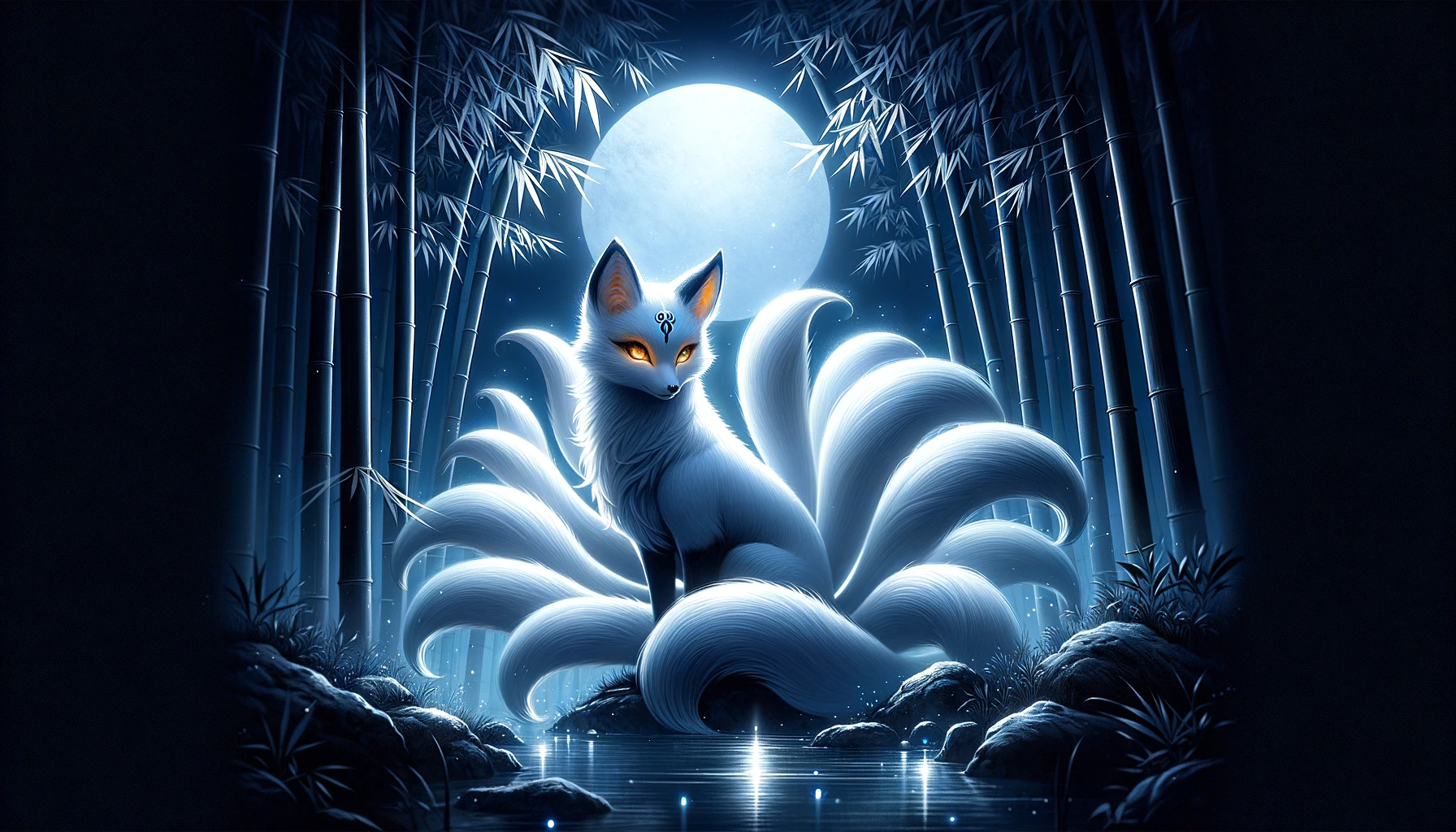Kitsune: Whispers of the Moonlit Grove
 Kitsune: Whispers of the Moonlit Grove
Kitsune: Whispers of the Moonlit Grove
Description:
“‘Kitsune: Whispers of the Moonlit Grove’ is an ethereal digital artwork that explores the mystical allure of the Kitsune, the legendary fox of Japanese folklore. This piece portrays a nine-tailed Kitsune in a serene, moonlit bamboo grove, where the boundaries between the earthly and the spiritual blur. The Kitsune, cloaked in an aura of gentle luminescence, stands as the guardian of the forest, watching over the myriad forms of life that dwell within.
The artwork is a fusion of digital brushwork and subtle 3D elements, which bring a lifelike depth to the moonlit grove. Soft shades of silver and blue dominate the scene, reflecting the quiet mystery of the night, while hints of amber in the Kitsune’s eyes suggest the creature’s supernatural insight. Each tail of the Kitsune shimmers with a faint glow, symbolizing its wisdom and magical powers.
Designed to capture the enchanting and somewhat elusive nature of the Kitsune, this piece invites viewers to lose themselves in the beauty and mystery of Japanese myths. The Kitsune is not just a figure of intrigue but also a symbol of protection and cunning, embodying the complexities of nature and spirituality that are central to Japanese folklore.”
This description aims to immerse the viewer in the captivating and enigmatic world of the Kitsune, enhancing the mystical and cultural richness of the artwork.
Background on Kitsune in Japanese Folklore:
Origins and Meaning: Kitsune (狐) is the Japanese word for fox. Foxes are a common subject of Japanese folklore, depicted as intelligent beings possessing magical abilities that increase with their age and wisdom. According to Yokai folklore, all foxes have the ability to shapeshift into human form, and as they grow older and wiser, they may gain additional tails. A Kitsune can have up to nine tails, and a nine-tailed fox is considered particularly powerful and is seen as a symbol of immense wisdom and magical strength.
Spiritual and Supernatural Beliefs: Kitsune are often categorized into two main types: the zenko (善狐, “good foxes”) and the yako (野狐, “field foxes”). Zenko are benevolent, celestial foxes associated with Inari, the Shinto deity of fertility, prosperity, and rice. They serve as Inari’s messengers and are believed to protect the deity’s shrines and worshippers. Conversely, yako are often mischievous or malevolent, playing tricks on unsuspecting humans or possessing them, but these actions can also serve as lessons in humility or retribution for bad deeds.
Cultural Impact: Kitsune are prominent in numerous folktales and continue to be popular in modern Japanese culture, appearing in manga, anime, and film. They are often depicted as complex figures who can be both tricksters and protectors, reflecting their dual nature in folklore.
Folktales and Stories: One famous folktale is the story of Tamamo-no-Mae, a beautiful woman who was revealed to be a nine-tailed fox in disguise, using her bewitching powers to seduce and manipulate emperors. Another popular tale involves a kind old man who shares his food with a hungry fox, who later returns the favor by transforming into a beautiful woman and becoming his wife, helping him gain fortune and favor in his village.
Symbolism and Representation: In art and literature, Kitsune are often depicted amidst autumn leaves and full moons, which align with their mystical and enigmatic qualities. They may carry keys in their mouths, symbolizing their role as protectors of granaries and their association with Inari, or be shown with a scroll or a jewel, representing wisdom and magical abilities.